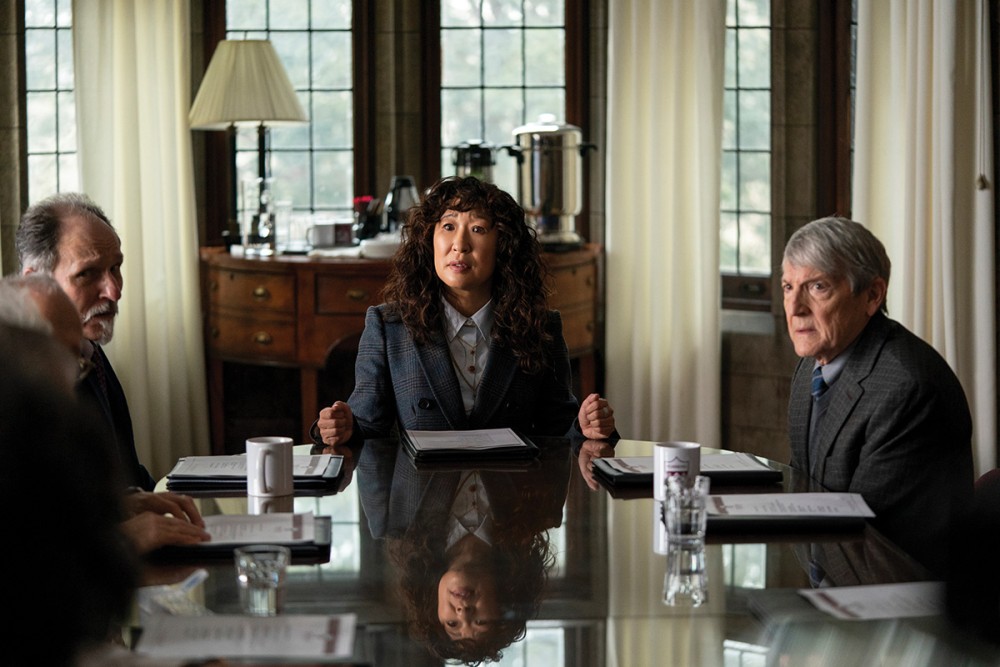The Chair and the collapse of the humanities
Who, exactly, should preside over meaning-making?

In the opening sequence of the Netflix comedy series The Chair, Ji-Yoon Kim (Sandra Oh), the first woman of color to head the English department at a struggling liberal arts college called Pembroke University, makes her way across campus amid shots of ivy-carpeted walls and idyllic quads to the exultant strains of Vivaldi’s Gloria in D Major: “Gloria . . . Gloria . . . in excelsis Deo.” Glory to God in the highest. Gaining her office at last, the new department deity takes a seat in the chair behind her massive desk as the glorias reach their climax—and then pitches sideways to the floor. The chair has collapsed. It is broken.
The broken-chair metaphor stands—or falls—for the many varieties of dysfunction and disequilibrium that plague the contemporary liberal arts landscape: the culture wars, the tenuous fate of the humanities, the commodification of higher education, gender and race inequities.
But Kim’s broken chair is also a broken throne: it is the slapstick embodiment of the collapse in postmodernity of the Great Chain of Being, that hierarchical metaphysic of medieval cosmological origins that situated God (pronouns he, him) at the top of the pyramid and all lesser beings— angels, humans, animals, plants, and minerals—in diminishing order below. This hierarchy gave humans a way to understand reality, a way to make meaning. All things pointed ultimately to God; capital T truth existed and could be possessed and communicated; the universe was governed and made sense.




